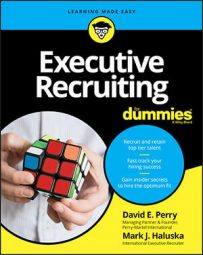The interview phase involves five separate in-person, face-to-face interviews:
- First face-to-face interview: This interview isn't so different from the follow-up phone call you made during the recruiting phase (except it's not on the phone, obviously). Your main goal here is to get the candidate's story (again). You'll also fact-check his story to make sure everything checks out, and try to pin down your general impression of the candidate. Participants in this interview, which will likely last around two hours, include the candidate (duh), internal recruiter, external recruiter (if applicable), and optionally, a scribe, for taking notes.
- Search chair interview: During this interview, the internal or external recruiter, search chair, and, optionally, a scribe, meet with the candidate to further assess her suitability for the role. This interview typically lasts between two and three hours.
- Hiring manager interview: This interview is similar to the search chair interview, except that it also involves the hiring manager, who may also be the ultimate hiring authority. The point of this interview, which also lasts between two and three hours, is to assess whether the hiring authority likes the candidate and can work with him.
- Search committee interview: Candidates who make it this far meet with the internal recruiter or external recruiter, search chair, and search committee. This interview isn't so much meet-and-greet; it's do-or-die. As part of this fourth interview, the group convenes for a casual lunch, which helps to foster an emotional connection between the candidate and the search chair and committee — especially important if the job requires that the candidate relocate.
- Candidate presentation interview: To call this an interview is somewhat inaccurate. It's better described as a meeting during which your top candidate delivers a presentation — for example, of the candidate's 30-60-90 plan. The idea here is not so much to assess the content of the presentation, but to gauge how she prepared for it. This will give you a pretty good sense of her general modus operandi.

